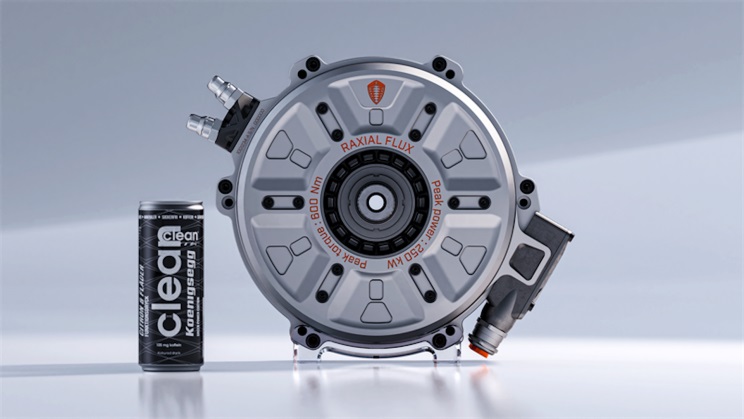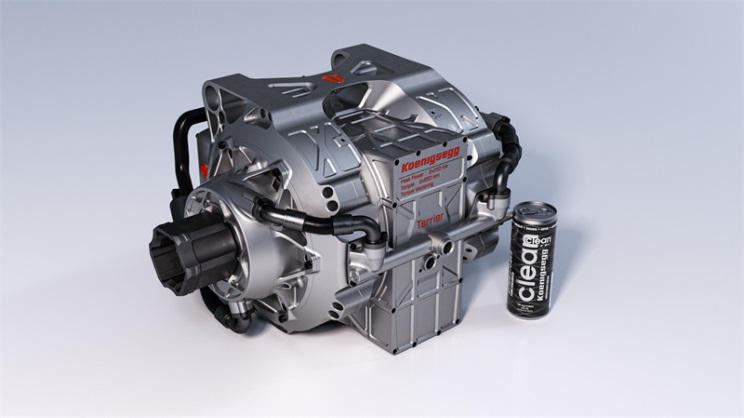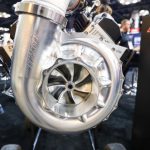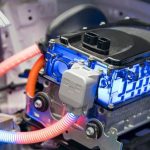
Koenigsegg revealed its new Quark EV electric motor as part of its drive to build in-house technologies for its hypercar lineup.
The new state-of-the-art “raxial flux” electric motor falls somewhere between a radial-flux and an axial-flux design, providing the immense power of the former and the torque of the latter. This allows for a more simple transmission, making the machine lighter and more compact.
Koenigsegg shared images of the Quark motor, alongside a 330 mL beverage can, giving a good idea of just how small the machine is. That makes it all the more impressive, then, that the Quark EV motor has an output of up to 335 horsepower and more than 440 lb-ft of torque, all while only weighing 66 lbs (30 kg).
The hypercar firm says it has combined two Quark E-motors with one of its “David” 6-phase inverters, as well as planetary gear sets, to create “the class-leading Terrier, a torque vectoring EV-drive unit.” The company claims that this is “the most power/torque dense, torque vectoring drive unit in the EV industry.”
Raxial flux: balancing power and torque
“Small high-revving motors can have higher peak power to weight ratio, but they need transmissions in most applications in order to get to the desired output rpm and torque, causing energy loss and adding weight and complexity to do the same job,” CEO Christian von Koenigsegg explains in the company’s statement. “So any benefit in size is lost,” he says. Koenigsegg’s “radial flux” design finds a way around this problem by striking the required balance between power and torque.

Koenigsegg’s Electric Motor Design Lead, Dragos-Mihai Postariu, explains that “the Quark is designed to bolster the low-speed range of the Gemera, where you need it, for brutal acceleration. The ICE then focuses on the high-speed range. What this means in terms of performance for the Gemera is a big power surge followed by a continuous record-speed push to 400 km/h without any torque or power losses.”
Koenigsegg is known for its high-end hypercars, including the Agera RS, which reaches a top speed of 284.55 mph (457.93 km/h), making it one of the world’s fastest production cars. The company is increasingly combining electric and ICE technology to continue to reach megacar speeds while edging towards sustainability with their new electric drive train technology. The Regera hypercar, for example, provides 700 hp of electric propulsion as well as 1,100 hp of combustion engine power.

